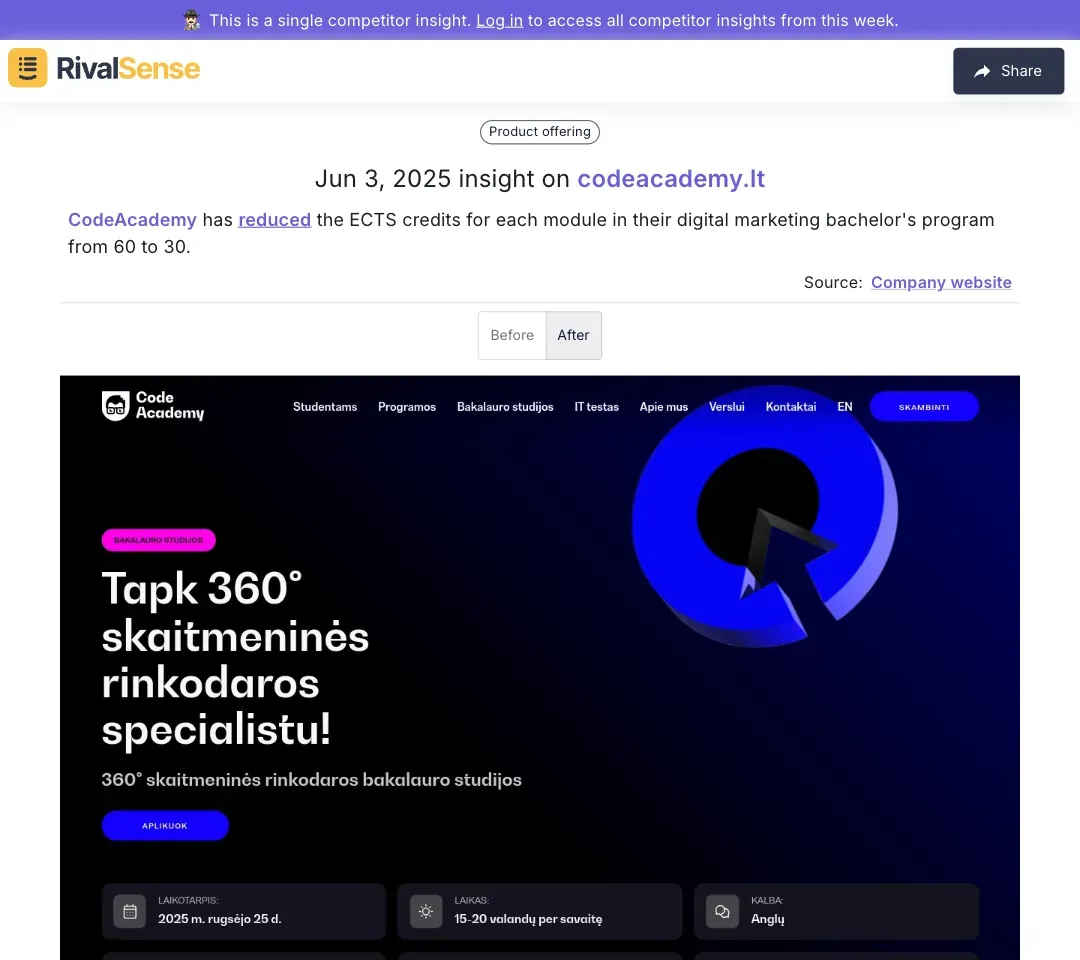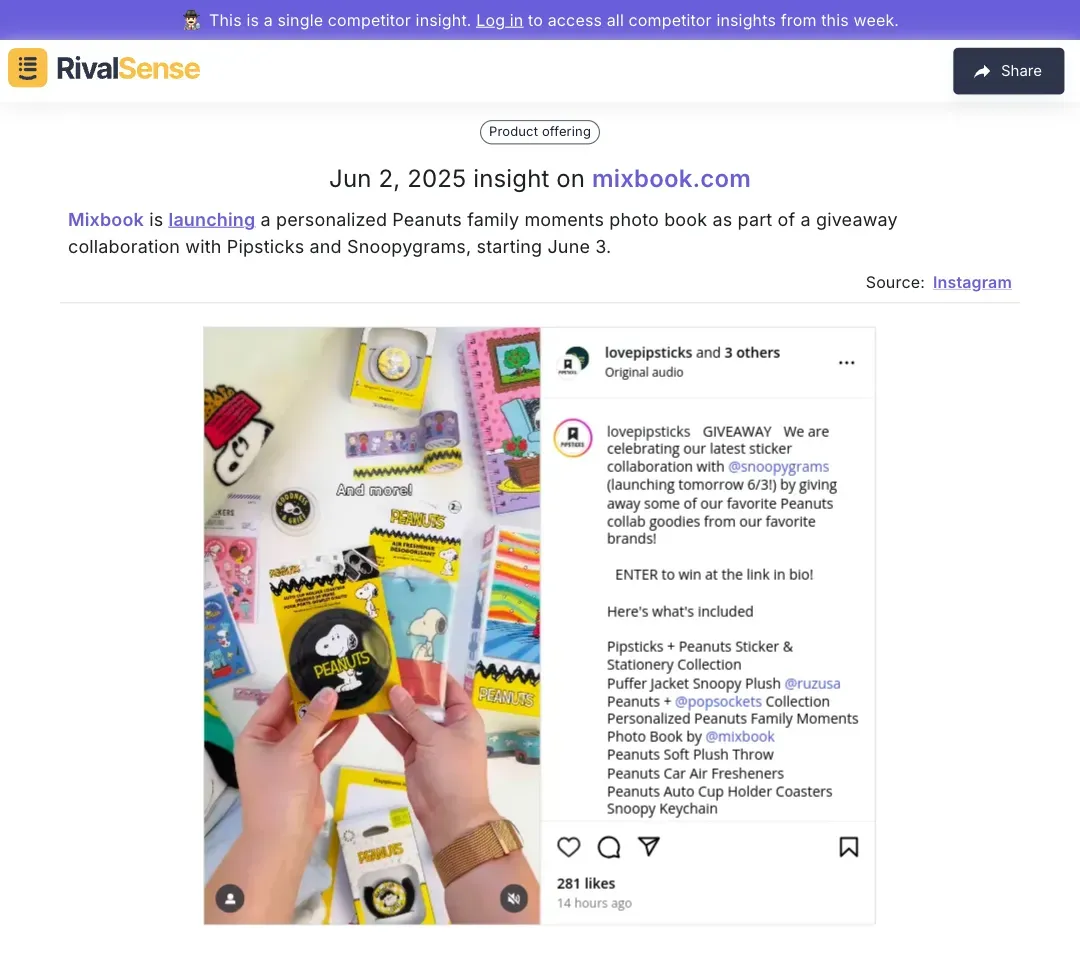Competitor Product Insights: Feature Comparison Workflow
In today's dynamic B2B landscape, merely tracking your own performance is insufficient for sustained growth. Understanding competitor movements provides actionable intelligence to anticipate market shifts and uncover strategic advantages. Feature comparison transcends basic functionality listings to reveal critical trends—like widespread AI-analytics adoption signaling market demand—enabling you to align development with customer expectations.
🔍 Why this matters: Consistent competitor analysis identifies gaps in your offerings and highlights innovation opportunities before competitors capitalize on them. For instance, tracking feature evolution helps prioritize your roadmap to exceed market standards rather than just match them.
Building a Feature Comparison Workflow
Implementing a structured feature analysis process transforms raw data into strategic decisions. This workflow minimizes guesswork by providing objective benchmarks against industry players. Begin by selecting competitors directly threatening your market position, then systematically evaluate their capabilities.
✅ Step-by-Step Workflow:
-
Identify Key Competitors: Focus on 3-5 primary rivals using market share and customer overlap criteria.
-
Define Comparison Metrics: Prioritize features impacting buying decisions (e.g., integration capabilities, security protocols).
-
Gather Real-Time Data: Automate tracking via tools like RivalSense to capture updates instantly.
-
Visualize Differences: Use matrices to compare features side-by-side:
Feature Your Product Competitor A Competitor B Mobile App ✓ ✗ ✓ API Access ✓ ✓ ✗ Free Tier ✗ ✓ ✓ -
Spot Trends: Note recurring additions (e.g., three competitors adding chatbot support).
-
Drive Action: Address gaps—if competitors lack mobile access, prioritize it as a differentiator.
💡 Pro Tip: Review comparisons quarterly with cross-functional teams (product, sales, marketing) to maintain relevance.
Analyzing Pricing and Value Adjustments
Pricing shifts directly influence customer perception and market positioning. Sudden competitor discounts may indicate aggressive customer acquisition tactics, while premium pricing often signals confidence in superior value. Beyond price tags, evaluate bundled offerings, service tiers, and perceived value changes.
📉 Real-World Insight: When CodeAcademy reduced ECTS credits in their digital marketing program without adjusting pricing, it signaled a potential value dilution. Tracking such adjustments helps anticipate customer dissatisfaction and adjust your messaging:

🛠️ Action Plan:
- Benchmark pricing monthly against 3 key competitors
- Survey customers after competitor price shifts
- Introduce limited-time value boosts (e.g., free training modules) to counter competitor devaluations
Spotting New Product Launches and Innovations
Competitor launches reveal emerging market needs and technological trends. Analyzing product features and target audiences helps identify whitespace opportunities in your offerings. Early detection allows proactive strategy refinement before market dynamics shift.
🚀 Real-World Insight: When RSA launched its yacht crew insurance product, it highlighted a niche market expansion. Monitoring such innovations uncovers unmet customer needs:

🔧 Implementation Checklist:
- [ ] Set automated launch alerts
- [ ] Reverse-engineer competitor USPs
- [ ] Compare features against your roadmap
- [ ] Brainstorm 2x value-enhanced alternatives
- [ ] Test concepts with beta users
Evaluating Collaborations and Promotional Campaigns
Partnerships amplify reach and credibility, while campaigns test messaging resonance. Analyzing competitor collaborations reveals audience expansion tactics and high-impact promotional channels. Successful campaigns often combine timing, influencer alignment, and clear value propositions.
🤝 Real-World Insight: Mixbook’s Peanuts photo book collaboration demonstrated how co-branding taps into nostalgic audiences. Tracking such initiatives inspires partnership strategies:

🎯 Evaluation Framework:
- Brand Alignment Score (1-10): Does partner audience match yours?
- Engagement Metrics: Track shares/comments on campaign posts
- Offer Analysis: Limited-time vs. evergreen incentives
- ROI Estimation: Customer acquisition cost vs. lifetime value
Conclusion: Turning Insights into Action
Competitor intelligence only creates value when translated into strategic decisions. Prioritize insights that align with your core business objectives, whether that’s capturing underserved markets or enhancing feature superiority. Embed continuous monitoring into your operational rhythm to maintain agility.
🔁 Sustain Momentum:
- Conduct quarterly competitive deep dives
- Assign "insight owners" across departments
- Reward teams for implementing competitor-inspired improvements
Ready to streamline your analysis?
Discover how RivalSense automates competitor tracking—delivering product launches, pricing shifts, and partnership news in weekly reports. Get your first competitor report today and transform market data into actionable strategy!
📚 Read more
👉 From Competitive Advantage to Corporate Strategy
👉 Mastering Red Ocean Competition: Strategies to Thrive in Crowded Markets
👉 Unlocking Competitive Advantage: Strategies and Real-Time Insights
👉 Crafting a Market Intelligence Framework: A Step-by-Step Guide for Business Leaders
